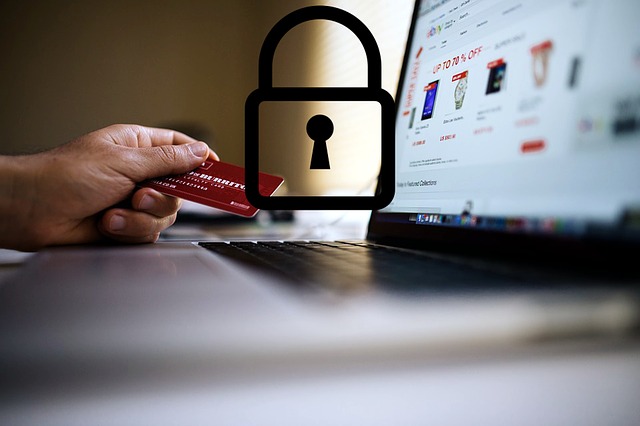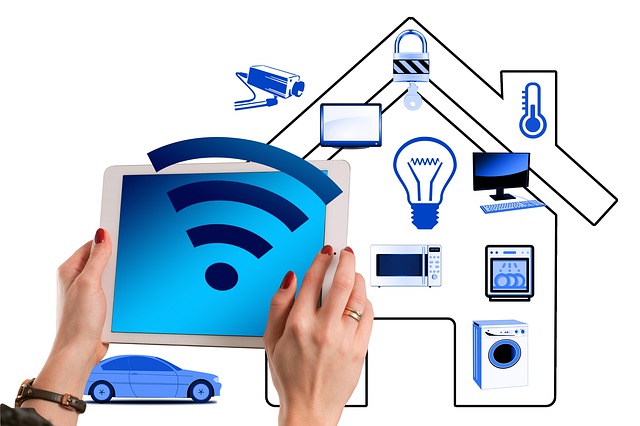Home Safety Tips for the Digital Age

Once upon a time, home security focused more on community initiatives like a neighborhood watch team. Now, technology has completely transformed how home security is viewed and has made it more digital. There are endless gadgets and tools available to help you make your home a safer place to be in, including but not limited to artificial intelligence which makes features like facial recognition and smart home integration possible. These technological advancements can give you more confidence in your ability to keep your home safe.
So, what are your options when it comes to home safety and what technologies are available to you?
Home Security System
It wouldn’t be right to discuss home safety tips for the digital age and not touch on home security systems. While these aren’t a new development, new innovations are being invented every day to make it all the more sophisticated and accessible. The global home security systems market is projected to grow at a compound annual growth rate of 8.3% between 2018 and 2026. This could be because security is a major concern in homes — seeing as a burglary takes place every 23 seconds in the U.S.
In addition to this, homes without security systems are 300% more likely to be burglarized. Aside from being able to protect you from burglars, a home security system is beneficial as it can alert you about flooding, a fire, and smoke too. Between 2013-2017 U.S. fire departments responded to around 354,400 home structure fires per year, so getting a home security system is a good preventative measure to take.

Start Simple
If you want to start simple, home cameras are a common element of a home security system you can have installed. They can deter potential intruders and make it possible to prosecute them in the unfortunate event that they successfully break-in. A study by the University of North Carolina on 422 burglars found security cameras are the most effective way to scare burglars away. According to to the findings: “Approximately 83% said they would try to determine if an alarm was present before attempting a burglary, and 60% said they would seek an alternative target if there was an alarm on-site. This was particularly true among the subset of burglars who were more likely to spend time deliberately and carefully planning a burglary.”
Aside from an alarm, other components of a home security system to consider are door and window sensors, glass break detectors, motion sensors, and carbon monoxide detectors.
Keeping Tabs on Children
Similarly, a nanny cam can be installed so you’re able to keep an eye on your little ones if you have a nanny watching them in-house. Know that it is legal to have a nanny cam in all states, but you’ll need to familiarize yourself with your region’s recording regulations. For instance, two-party consent states require that if something is being recorded with sound, it has to be disclosed to all parties involved. Some states that require you to disclose the use of sound are Florida, California, and Washington.
If you’re about to kickstart any home renovations, it’s the perfect opportunity to integrate home security into your plans. Such renovations could save you money, especially when it comes to homeowner’s insurance. Simply having a security alarm is said to lower your insurance payments by up to 20%.
Protect Yourself Online
Home safety isn’t just about the physical measures you put in place to prevent burglars and unwanted intruders coming in, it’s also about what you do online as well as preventing your personal information from becoming accessible.

For instance, if you post images on social media and enable your location, strangers could easily find your home. If you’re planning to travel, only disclose limited information. The most common time of the day for burglaries is between 10 a.m. and 3 a.m. on weekdays, so letting strangers online know your whereabouts could make our home vulnerable to criminals. A survey was sent to 500 convicted burglars in New York and New Jersey and more than 10% of them said they used social media to find targets and see if they were out of town so they knew the best time to strike.
Email Security
Beware of the information you keep in your emails too as hackers could break in using various techniques. Phishing is a common one where fraudulent emails, texts, or websites are used to access your personal information. Avoid phishing attacks by carefully scanning emails before clicking any links or responding. Some signs that you may be a target in a phishing attack are misspelled words in an email, words associated with urgency, and the request to share sensitive data or access information you wouldn’t typically share.
If you have a family business, that’s even more reason to take measures to protect yourself online. Do so by securing your Wi-Fi network so hackers can’t access your network and steal information. Using strong passwords and deleting sensitive information that doesn’t need to be saved are other measures to take. Also, take personal safety seriously by keeping your gadgets secure when you’re commuting to work and being aware of your surroundings at all times. A stolen laptop or phone could turn into a data breach nightmare if you run a business.
Utilize Smart Features
If you’re a busy adult or one with a family, you can agree that time isn’t always on your side. This is where technology comes to the rescue as you can manipulate various elements of your home security system remotely.
For instance, you could monitor what’s going on in front of your house from an app on your mobile phone or use keyless door locks that can be operated remotely. The latter is a great home security tip for busy moms who may want an add a layer of security to their homes for their kids. With keyless doors, you don’t have to do the old-fashioned thing of leaving keys under the mat and you can see who gains access to your home. However, they are no safer than other locks if you’re careless and someone gains access to the code or they’re able to guess it.
Set Reminders For Safety Checks
A less than obvious way technology can help with home safety is through scheduled reminders via your phone calendar. If you prefer using apps, there’s one called Home Maintenance Manager that reminds you to carry out maintenance periodically.
When life gets busy, you can forget to do routine checks and this leaves you vulnerable to accidents. For instance, smart electrical upgrades should be done periodically to make your home safer. If your home was built 20 or more years ago, it may be time to replace your electrical panel or fuse boxes. It’s essential that you do as there’s a potential fire hazard when they’re not maintained and updated.
Another routine thing to check for is mold as it can be harmful to your health. Overexposure to it can result in allergic reactions and irritation to your eyes, skin and throat. While the best way to get rid of mold is to clean it, there is technology that can help trap or get rid of mold in the air. It eliminates mold spores using a special chemical reaction Photo Electrochemical Oxidation.
If you have a battery-operated smoke alarm, you can get alerts when it needs to be replaced. For instance, Roost’s smart smoke alarm connects to Wi-Fi and comes with an app that gives you a heads up when the battery is low. It also sends everyone an alert when smoke is detected which could help keep everyone safe.
Your home is your sanctuary, so that means making it safe and secure should be a top priority. While you can’t control everything, technology has made it possible to control many things that go on at home through gadgets you use every day.
This guest post was authored by Brooke Faulkner

Brooke Faulkner is a writer, mom and adventurer in the Pacific Northwest. She spends her days pondering what makes a good leader. And then dreaming up ways to teach these virtues to her sons, without getting groans and eye rolls in response.

